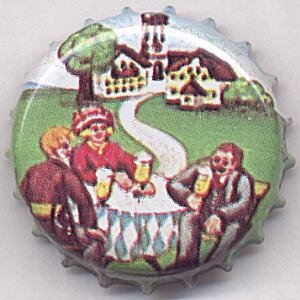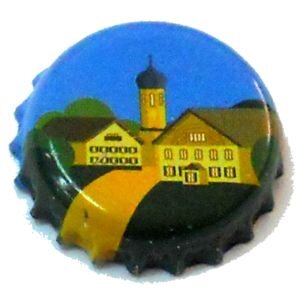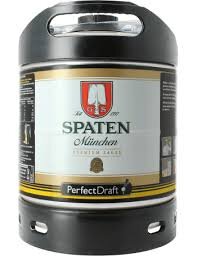I’ve got an Irish surname, but as Bruce Willis’ character Butch from Pulp Fiction so succinctly put it: “I’m American, honey. Our names don’t mean shit.” My grandmother always told us that we were ‘Heinz 57’ whenever we inquired about our family lineage; 57 varieties of (presumably?) white folks. That’s probably true of most of us in the United States and beyond (the 57 varieties, not necessarily the white folks part). Humans tend to mix together with others of varied and disparate descent to become something that is unique yet highly universal. I think it’s fair to say that none of us truly know all of the parts that make up our whole, but most of us think that we have some idea of where our family origin lies, at least in part. Your surname is definitely a good indicator of where at least part of your family hails from, but in my case even my relatives who immigrated from Ireland to the US were descended from people who immigrated to Ireland from Germany. That, along with some other family genealogy that has been well documented, illustrates that I am probably of around 50% German descent, with some Norwegian, Finnish, English and Irish thrown in for good measure. A lot of us who hail from the Northern parts of Wisconsin and Minnesota can reliably trace our Norwegian or Finnish ancestry only because the majority of those ancestors immigrated here in the early 1900s.
Beer in the USA is a great parallel to our human lineages. With the explosion of craft breweries and beer in general in this country, you see breweries here taking the known brewing traditions of the Europeans who many of us are descended from and expanding upon their basic form; sometimes with great results, and sometimes leaving your palate in the dust. For years, when most American craft brewers brewed a classic style like an ale or pilsner, they backed up the truck from the cascade hop farm and let it rip, imparting mostly that flavor and burying most of the other ones. That’s cool. I personally don’t want to drink it, but it’s cool to push the envelope and take something to the nth degree. Often, when you push the boundaries of something you arrive somewhere new and unexpected, hopefully with pleasing results. The problem is, many people (and brewers are some of the chief offenders) jump ahead to the step where they make the ‘innovative’ product without first learning how to make a perfect version of what came before. That’s problematic. In most forms of art or craft it is pretty much universally accepted that you can’t make an appreciable innovation or improvement without succinct knowledge of the original.
So, long story longer, I thought it would be fun to take a little tour of the country that a lot of people consider the epicenter of good beer; Germany. See what I did? I’m writing! Writers tie stuff together and stuff!
I think my willingness to drink just about any German beer belies what I’ve learned in drinking wine; find a region that you like and learn the styles (grapes in the example of wine) that appeal to you. I have had really good success in that manner, even as my tastes have changed. Early on in my wine game I would gravitate towards Australian wine because all of the versions available to me had a similar quality; they were sweet and jammy from the intense Aussie sun and the vines were mostly of new world varietals that did not have the complexities of some of the older vine, European wines. Weather conditions are a huge part of the wine equation no matter what varietal of grape you grow. Ever tasted some of the wines produced made from grapes grown here in the Upper Midwest? The quality of those that I have tried can be described in terms ranging from passable to downright diabolical. The weather here isn’t like France, and it for damn sure isn’t like Italy, so no amount of old world vine is going to make up for the differing amount and quality of sunlight or the completely different soil and growing conditions. Beer is an almost complete departure from this idea. Poor quality ingredients in beer are definitely going to lower the quality of the end product, but not in the same way that it would with grapes and ultimately wine. The grains and hops to brew beer are not all created equal, to be sure, but since the process of brewing beer is so completely different from that of making wine, you end up with much less of the nuance and actual flavor of the grain. In other words, you’re actually tasting the process more than the ingredients. Give the master brewers at Ayinger or G. Schneider & Sohn the exact same grains and hops that our old pals Budweiser use and see which lager is better. Even though the Germans might be appalled at using rice (the main ingredient Budweiser uses) as the grain for the recipe, their process would probably yield a higher quality result. So, when I talk about liking regions for brewing beer (and this is mostly true in Europe, less so in the ‘States), I gravitate towards them for their brewing traditions. Beyond just the traditions of brewing great beer, the Germans have for centuries written laws to protect the quality of their beer. Written by Bavarian noblemen in the year 1516, The Bavarian Purity Law for beer says only water, barley and hops may be used to brew beer. Yeast was added to this list, later known as the beer purity law or Reinheitsgebot, when scientists discovered the fermenting agent centuries later. Beer was of great importance to the Germans, as it was a main food staple and also a source of clean, potable hydration (with the added bonus of booze). The modern version of the Reinheitsgebot is not the first attempt at steering the production of beer. It is, however, seen as the high point of several hundred years of regulatory development which was aimed at supplying the citizens with qualitatively good beer (a food staple at the time), while also regulating the prices.
OK… ENOUGH WITH THE BORING HISTORY LESSON. Let’s get into some suds, my buds.
Ayinger- Aying, Bavaria
Full disclosure; I first bought Ayinger’s beer because I loved the label, and especially the cool bottle cap it had. Since then, I’ve had occasion to try several of their other styles, many of which are readily available in the United States at some of the your finer liquor stores and bottle shops. If you are at a liquor store and they do not have at least two kinds of Ayinger beer, WALK AWAY. Alright, maybe that’s a bit extreme. But, seriously, I don’t trust a store will be able to serve my needs if they are not well in the know with this brewery. Ayinger absolutely blasts me into the pleasure-sphere with their Bavarian Pilsner, which is a little heavier on flavor than, say, a Czech style pilsner, but still balances the sweet, slightly caramel taste with a nice brace of hops.
Bavarian Pilsner is definitely a brew that can be enjoyed in any season, but could be served closer to cellar temp in the Autumn/Winter months and then ice cold in Spring/Summer. Ayinger also makes a product that I love called Urweisse. This delicious beer is pale in color and hazy; with a big and voluptuous head. This is sometimes referred to as a ‘brut’ beer, as it begins with a bit of a tart note followed by a delicious, smooth body from a combination of grains comprised of about 60% wheat. This killer brew finishes with a subtle (don’t be afraid, it really is subtle) taste of cloves and ripe banana. That may sound crazy to you, but trust me when I say that it is very approachable and incredibly well balanced in all flavors. Ayinger’s Weizenbock is a relatively uncommon style, even in Bavaria, so I just had to mention it here. Weizen bocks are wheat ales brewed to be as strong as bock. They are incredibly drinkable, full-bodied and deeply flavored but also perfectly balanced. This beer would be a great one for drinking around a fire in the heart of winter, but could probably refresh you in the summer, too.

Weihenstephan– Freising, Bavaria
This is a storied German brewery, the oldest in the world, in fact, that has been in its location in a hilltop monastery for nearly a thousand years. ONE THOUSAND years. As in, before Charlemagne was born, before the Crusades, before most of the cities in Germany that exist today were even cities, Weihenstephan has been making that wort and pushing those suds. I’ve included them here not only because they make great beer, but also because it is widely available in the US. German brewing is definitely a storied tradition, but also one that still is allowed to breathe and evolve, even in more recent times. Of course, ‘recent’ when you’re talking about breweries that have gone on for hundreds-plus years could mean only 150 years ago, but who’s counting? Let’s talk about Weihenstephan Festbier, by way of example. I guess that I need to let you know that the ‘fest’ is in regards to Octoberfest, which is like Christmas for drunks in old Deutchland. The term ‘Octoberfest’ in regards to beer is actually pretty strict in terms of the geographical location of where it is brewed, so ‘festbiers’ are sort of the rest of Germany answering the call for a beer for this very special time of year. Weihenstephan Festbier is completely different from what most people would think of as an Octoberfest beer. ‘Festbier’ is a very light straw colored lager, with a snowy white head and a refreshing hop taste that disappears quickly. I usually see it here in the ‘States every fall, and I always buy it. It’s quite simply one of the best lagers you will ever drink, and one that leaves me wishing it was always October. And speaking of changing brewing traditions , I would be remiss if I did not mention Vitus by Weihenstephan. This beer is a light-colored, full-bodied, spicy single-bock with a creamy head. Sparkling with an effervescent mouthfeel, it develops its round character based on the extra long storage time giving it a bit of the complexity of a Saison, but without a ton of the ester and banana qualities. Thus, the Vitus does not taste like a typical Bock beer but more like a noble, fruity wheat beer. Weird, right? Not exactly my go-to or anything, but something that I had to try, and you should, too. I’m also a big fan of Weihenstephan Kristalbier, which is essentially a wheat beer that has been heavily filtered to obtain ‘crystal’ clarity. The filtration process must take out a lot of the heavier overtones that I would normally associate with a wheat beer, which leaves you with lots of the floral qualities inherent in wheat beers at the forefront. This is a great food beer for that reason, going well with seafood and white meat in the way that a dry white wine would.
J Schneider & Sohn (Schneiderweisse)– Kelheim
This brewery is noteworthy to me in that it only produces wheat beers. I’m not a wheat freak or anything, but Schneiderweisse Tap 7 (sometimes refered to as ‘The Original’) is truly something special. I first had opportunity to try this beer at a Rathskellar (loosely defined as a beer hall or restaurant located in a basement) here in my town of Duluth, MN. The very serious brewmaster (Dave Hoops) who worked for the restaurant group which owned this Rathskellar was somehow able to get half barrels of this beer imported to him from Germany. Amazing! This was the closest thing to drinking it in Germany that you could achieve Stateside. I have included this beer and brewery in my list also because it is readily available here in the US, though not usually on tap. The version that we can buy in bottles is still really good, but as most of us savvy to what a great, clean tap system does know, it just can’t touch it. I won’t waste time describing the flavor here, other than to say that it’s very similar to some of the other weisse that I have described in this article. Even if you don’t like wheat beer, try this one! It is widely regarded to be one of the best versions in the world.
Spaten– Munich, Bavaria
‘Lass Dir raten, trinke Spaten.’ or ‘Let yourself be advised, drink Spaten.’ is an ad slogan first coined in the 1920s by Spaten brewery. I love the way this reads in English (although it doesn’t rhyme as in the Deutsche); it’s so German! You know, we’re not telling you that you have to drink Spaten, that’s up to you, of course, but just be advised that you should be drinking this beer. Too true! Spaten is one of the most common German imports found in the US (I’m not going to talk about Beck’s or St. Pauli Girl, OK?), but it’s also just a really good brewery, and one that has quite a few different styles. For my taste, Spaten makes the excellent Munchen and Munchen Hell, Vienna and Helles style lagers, respectively. These beers are bready, crisp and dry. I think the Helles has slightly more hop flavor, but really they’re pretty similar to one another. If you want to try a pretty great version of a doppelbock, Spaten Optimator is easily found in most reputable liquor stores. This beer has a dark, cola-like appearance with a nice amount of off-white head and it smells very malty and sweet but not in a bad way. The taste is very deep malt, almost syrup like but at the same time its smooth and drinkable. It’s also one of those beers that drinks way less strong than it actually is. At 7.6%, this is the type of beer that you could get into trouble with if you get a taste for it some night.
There are still a ton of beers available from Germany in the USA that I haven’t touched upon. That’s OK! You have a world of discovery ahead of you! Generally, if you see a German import in the store, you can probably infer that it is going to be pretty high quality (unless it says Beck’s or St Pauli Girl, sorry gang). If you’re a hop-head like most of my beer drinking brethren here in the USA, you should probably stick to drinking IPAs brewed domestically. While there are reportedly a few breweries that make a nice IPA ( Fritzale, Häffner, and BrauKunstKeller are names that have been bandied about), it’s just really not their thing. But, if you want to drink any form of bock, wheat, lager or pilsner, stamp that liquor store passport and get to it!










